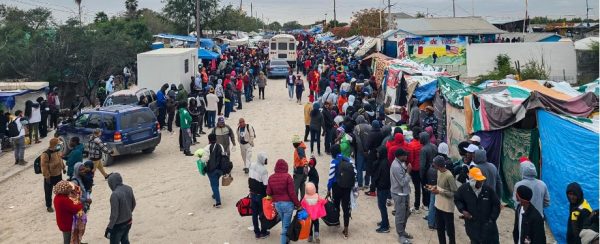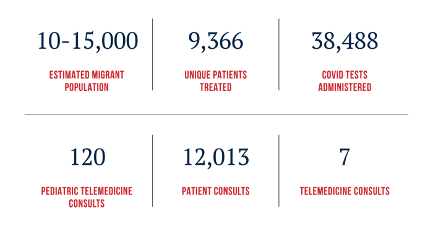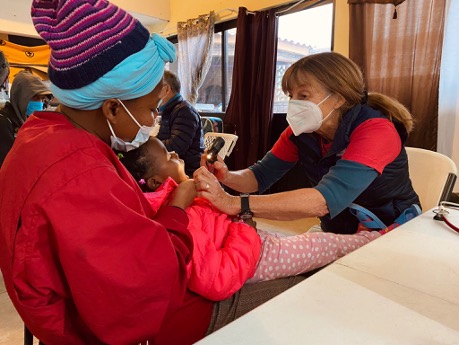by Katie G., GRM Volunteer Nurse
*Please note, names have been changed to protect our patient’s identity
In November 2022, GRM met Fabienne*, a Haitian refugee living in the Senda de Vida Shelter, who was 28 weeks pregnant and presenting with a medical condition called pre-term premature rupture of the membranes (PPROM), meaning her water broke too early. This condition is dangerous for the mother due to high risk of infection and high probability of emergency cesarean section and also for the premature baby, whose lungs are not fully developed and will need NICU care immediately after delivery.

Photo: Nurse Katie, a GRM volunteer and the author of this story, setting up for clinic hours in Reynosa.
Doctors Without Borders notified GRM that this woman had been turned away from the Reynosa emergency department because they did not have NICU capacity. So I went with others to collect the patient and her family from the shelter and brought them to the clinic at Casa de Lulu.
When Dr. William, a local GRM staff doctor, contacted the maternity hospital in Reynosa, he was told that all of the NICU beds were in use and they could not accept any more patients. At this point, the GRM team agreed that Fabienne would not be able to receive the immediate care she needed in Mexico and arranged for her to be received at a U.S. hospital in Texas via our medical referral cost coverage program (a program that is facilitated through GRM’s generous donor community for urgent and complex medical cases like this).
GRM contacted Lawyers for Good Government in order to initiate medical asylum paperwork and expedite Fabienne’s crossing. In the meantime, Dr. William and Nurse Katie gave her an injection of steroids to help the baby’s lungs develop and an injection of antibiotics to prevent infection. As soon as the legal paperwork was completed, GRM started assisting Fabienne and her family cross the border.
At this point, Fabienne was in pain, feeling contractions and leaking a significant amount of amniotic fluid. Nurse Katie used a GRM wheelchair to push the patient across the border bridge while another volunteer nurse, Lia, accompanied her family close behind. Once at the bridge, they were met by CBP agents and brought to the Immigration Center. It took about an hour to get through the Immigration Center before the patient was released and an ambulance was called. Katie accompanied Fabienne in the ambulance to the Rio Grande Hospital with Lia and the family following behind in an Uber.
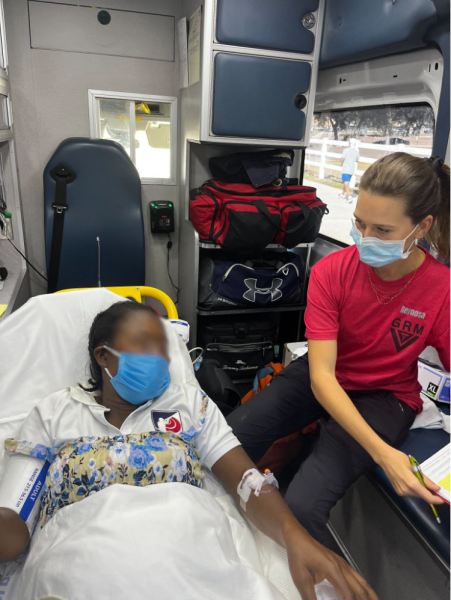
Above right: Nurse Katie and patient in U.S. Ambulance after crossing.
At the hospital, Fabienne was immediately transferred through the ER and into the Labor and Delivery Unit. The L&D staff were pleased to hear she had already received antibiotics and a steroid injection at the GRM Clinic, noting GRM’s quick thinking and fast action potentially helped the patient avoid an emergency premature c-section, and certainly helped prevent infection or worse complications.
Once Fabienne was safely settled in the L&D unit, GRM staff focused on the patient’s family. Unfortunately, the hospital would not allow the family to stay in the hospital room with the patient. However, our Reynosa Project Manager contacted our friends, the Angry Tias and Abuelas, another local nonprofit, who provided a three-day stay in a nearby hotel for the family.
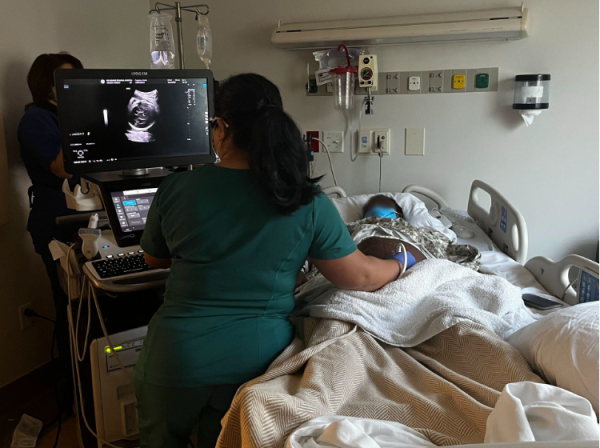
Photo: Patient receiving treatment in McAllen, TX in Labor & Delivery Unit.
Our patient and her family were grateful for the medical services provided by GRM and told our staff this was the first time in months that they felt safe and optimistic about the future.
While it is terrible to think of what the outcome could have been without the intervention of the GRM team, Lawyers for Good Government, Doctors Without Borders, the Angry Tias & Abuelas, and everyone else involved in this patient’s care, this situation illustrates exactly how important our work is.
GRM is truly an organization that stands by the principles of the humanitarian imperative, they bring impartial assistance to those most in need and deserving. They are an organization I am proud to say I work with.
BLOG POSTS ARE THE OPINION OF THE AUTHOR AND DO NOT NECESSARILY REPRESENT THE VIEW OF GRM
